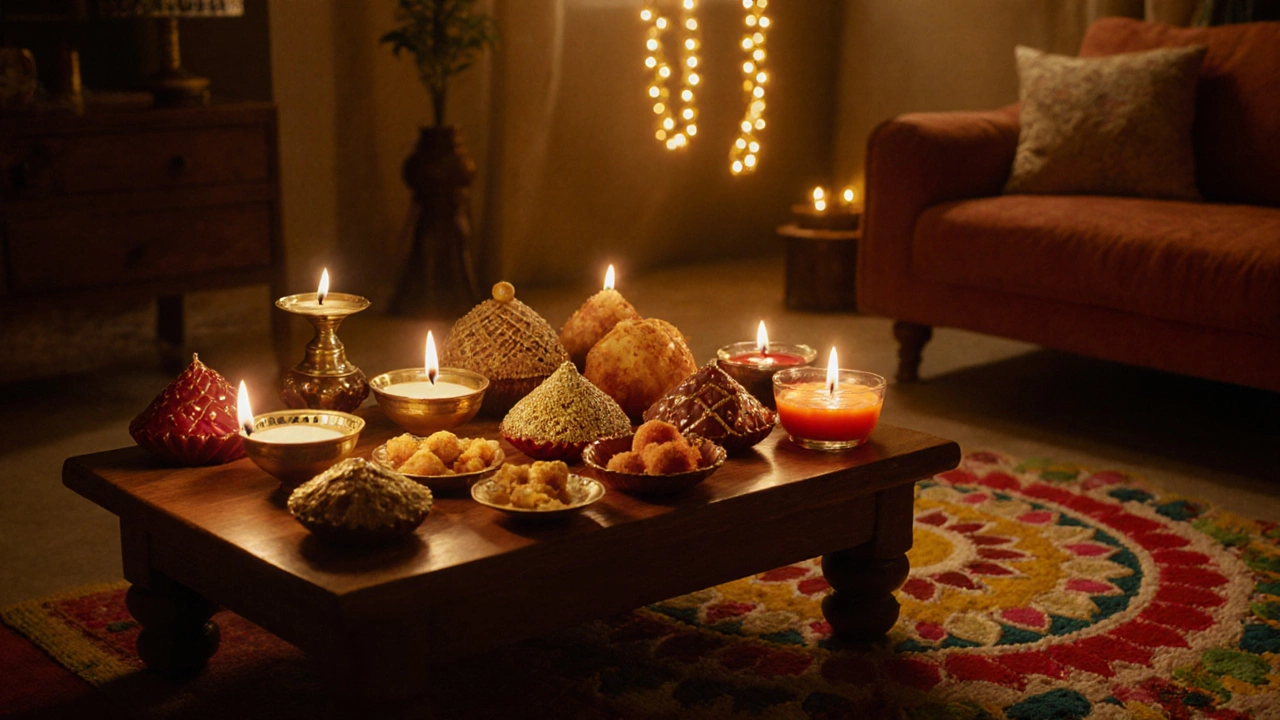
Why are sweets given during Diwali? Meaning and Traditions Explained
Discover the cultural and religious reasons behind gifting sweets on Diwali, explore regional treats, and learn tips for sharing the perfect festive sweets.
When you think of Indian festivals, you don’t just picture lights or drums—you think of Indian festival sweets, sweet treats made for religious occasions, family gatherings, and seasonal celebrations across India. Also known as mithai, these desserts are never just food—they’re offerings, gifts, and memories wrapped in sugar and cardamom. Every region has its own version, every festival its signature flavor. During Diwali, families fry ladoos, round balls made from gram flour, ghee, and sugar, often flavored with cardamom or coconut and pack them into tins to share. In Tamil Nadu, kheer, a creamy rice pudding cooked with milk, saffron, and nuts appears at temple feasts and home altars alike. These aren’t random recipes—they’re passed down, refined, and sometimes guarded like family secrets.
Why do these sweets matter so much? Because they tie ritual to taste. In Hindu tradition, offering food to the gods comes first—then everyone eats it. That’s why sweets like jalebis, deep-fried batter soaked in syrup, often served hot during Holi and Eid show up in temples before they hit the street stalls. The color, texture, and shape all carry meaning. Red sweets mark joy, golden ones stand for prosperity, and round shapes symbolize unity. Even the way they’re made matters: grinding sugar by hand, stirring slowly for hours, sharing the work with elders—it’s part of the ceremony. In places like Bengal, rasgulla, soft cheese balls in light syrup aren’t just a dessert—they’re a symbol of Durga Puja’s arrival. In Punjab, gulab jamun, fried milk solids soaked in rose-flavored syrup show up at weddings and harvest festivals, linking celebration to community.
These sweets don’t just taste good—they connect people. A box of Indian festival sweets given to a neighbor isn’t just a gesture; it’s a bridge between faith, family, and culture. Whether it’s a Tamil family making pongal kheer for Pongal or a Punjabi household frying balushahi for Diwali, the act of making and sharing these treats keeps traditions alive. You’ll find them in homes from Delhi to Chennai, from New York to Singapore, carried by the diaspora like a piece of home. Below, you’ll see how different festivals shape these sweets, how regional twists turn the same ingredients into something new, and why some of these recipes have stayed unchanged for centuries. This isn’t just a list of desserts—it’s a map of India’s soul, one sweet bite at a time.

Discover the cultural and religious reasons behind gifting sweets on Diwali, explore regional treats, and learn tips for sharing the perfect festive sweets.